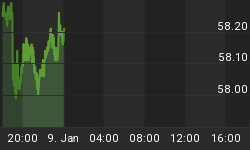One of the surest signs that a bubble is about to burst is junk bonds behaving like respectable paper. That is, their yields drop to mid-single digits, they start appearing with liberal loan covenants that display a high degree of trust in the issuer, and they start reporting really low default rates that lead the gullible to view them as "safe". So everyone from pension funds to retirees start loading up in the expectation of banking an extra few points of yield with minimal risk.
This pretty much sums up today's fixed income world. And if past is prologue, soon to come will be a brutally rude awakening. Most of the following charts are from a long, very well-done cautionary article by Nottingham Advisors' Lawrence Whistler:
Junk yield premiums over US Treasuries are back down to housing bubble levels:

So are default rates:

The supply of junk bonds is way higher than before the previous two market crashes:

The issuance of covenant-light loans -- the crappiest kind of junk -- is rising. On the following chart a higher number means lower quality:

Here's what happened to the various classes of debt the last time things got this out of whack (junk is purple):

As for what might cause the junk market to crack, one prime candidate is the oil industry. The shale boom has led a lot of energy companies to ramp up production using other people's money, much of which is coming from junk bonds. Now, with oil down from $100/bbl to around $80, the nice fat coverage ratios on these bonds are looking disturbingly skinny. This chart shows the divergence between overall junk spreads and energy-sector junk spreads.

The weakest of these companies will default in the coming year, and if oil prices fall another $10, perhaps most of these companies will default. This will of course be dismissed as a localized disturbance unlikely to spread to the broader economy -- which is exactly what they said about subprime mortgages last time around.
















